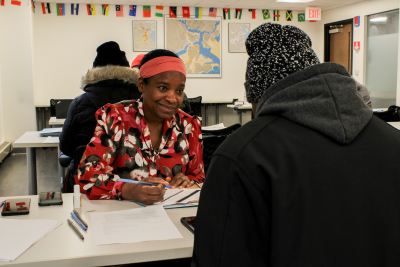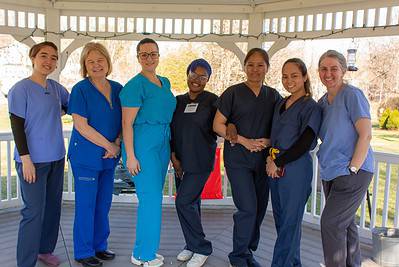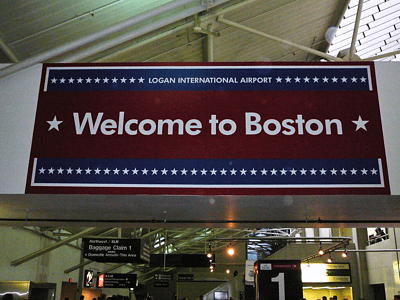What Does It Take to Find Affordable Housing for Refugees and Immigrants?
It’s no secret that housing is extremely scarce in New England’s cities. A “vacancy rate” is the percentage of a city’s existing housing that’s available to rent. Lowell, Massachusetts has a vacancy rate of 7%. Boston’s hovers around 2% and Manchester, New Hampshire’s is less than 1%.
Affordable housing is even more scarce, and when refugees first arrive, they face significant disadvantages as prospective tenants. Having been forced to suddenly leave their home countries under terrible circumstances, they start out in the U.S. without the security of jobs, credit, references, the funds to pay their deposits, and often, the English language skills and cultural knowledge to build the needed relationships with property owners.
What they do have is remarkable resilience, drive, and adaptability—and they have IINE. Refugees, asylees, and other protected immigrants are eligible for housing support under federal law, and the International Institute of New England has been successfully securing them housing before they arrive, setting up their apartments, and bringing them from their ports of entry to their first homes in the U.S., for more than 100 years.
IINE is notified by the U.S. Committee for Refugees and Immigrants that refugee families and individuals will be arriving about one to two weeks in advance. The word goes out to our Housing Coordinators and they’re off to the races, looking for housing that will meet the arriving refugees’ needs, is withinwalking distance to necessities such as grocery and convenience stores, and ideally, is situated in a diverse community that will connect them to fellow immigrants and former refugees who will embrace their arrival. Last year, IINE successfully found housing for more than 345 new arrivals. Read on to learn how.
IINE housing coordinators draw from networks and experience.
Paris Peters had a full 20 years of experience as a realtor in Boston before becoming an IINE Housing Coordinator at the beginning of 2023—so she already knew a lot about finding people housing in Boston. “Or I thought I did!” she says, laughing.
She explains that finding housing for people who arrive without the resources of other potential tenants is a whole different ballgame, but she does draw from a network of about 20 realtors who trust her and understand what she needs, “my backbone,” she says. “They come up with something, even if we can’t take it. Every time I say, hey I need, this…they’re like, hey, we’ve got it.”
Still, they won’t always have apartments that meet a particular family’s needs, so Paris has to constantly grow her network. “Apartments.com, Craigslist, Facebook has a whole housing section—I also am a member of quite a few real estate groups and find them to be the most helpful. I get the quickest responses from them. So, networking and using the community really, really helps. Something as simple as speaking to your neighbor—that has gotten me an apartment.”
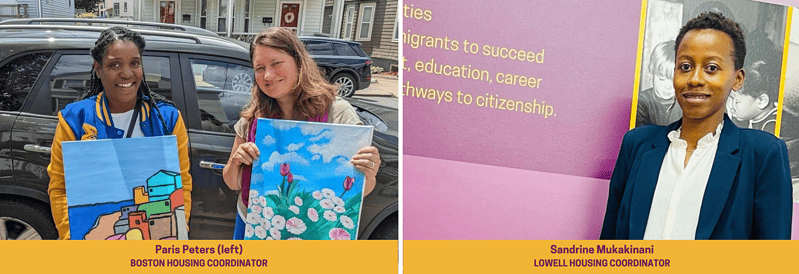
Sandrine Mukakinani, Paris’ counterpart in IINE’s Lowell office, was a local property manager who had been providing housing for our clients when she became an IINE Housing Coordinator in 2023. A former refugee from Rwanda, she was resettled by IINE in 2015, and after exploring several careers, became interested in realty. “It’s something I have a passion for doing. I like anything related to properties,” she says. “I want to grow in the property business. Doing this job…I meet many landlords, I learn a lot, and I can also serve our office. So, I like it. It’s challenging, yes, but I do accept that challenge because I’m learning.”
Sandrine says she has a network of about 18 realtors that serve as her go-to’s in Greater Lowell, and like Paris, frequently checks apartment listing sites, Facebook, and Craigslist as well.
“I start with the landlords we already have an existing relationship with. I call, I send messages, I disturb them all the time,” she says, laughing. “I use my friends who are involved in properties as well. I do it all. Any way I can get to, luckily, yeah, we have something available.”
For IINE’s Manchester, New Hampshire office, the network is much smaller but has been equally effective. “Manchester uses only three property managers,” explains Senior Program and Contract Manager Kateryna Kelly. “They manage not whole buildings, but large quantities of units in buildings here and there throughout Manchester.” One of these is actually based in Massachusetts and also finds units for IINE clients in Lowell. “We have a very informal relationship with him. Sometimes we just text him and let him know what we need and when.”
Property owners who are also immigrants are a good bet.

Paris is the granddaughter of immigrants from Cape Verde, Sandrine a former refugee from Rwanda, and Kateryna, an immigrant from Ukraine. While their experiences were very different, they are all able to empathize with the challenges our clients face. They find the same is true when they connect with property owners who are immigrants.
“Most of the landlords that I have found are also from immigrant populations themselves, or their parents were immigrants,” says Paris. “That’s the great thing about Boston. It’s got a large immigrant/refugee history and population. Either their grandparents, their parents, or they came from somewhere else, myself included. You understand what kind of difficulty it is, you know, moving from one country to another, what cultural shocks they’re going to go through, because they understand the process.”
Sandrine reflects, “It’s not that easy when you come from far away, especially when you come from Africa. It’s a new country, new culture, new everything, new people. You leave your family back home, so you start all over again. It takes time to settle. The Lowell community has a lot of immigrants. So those [go-to] landlords—not all but many—they also came as immigrants. They understand and they are willing to help.”
IINE’s strong track record can make all the difference.
Building up a network of reliable realtors and property owners who will quickly respond to requests with opportunities takes charm, patience, and relationship-building.
“It does help when there is a program assisting a tenant,” says Paris. “I make that a benefit of us, a benefit for the landlord, and I use myself as a backup. I tell the landlord if you’re having a problem with the tenant, please call me.” She explains that not only will the landlord have her support, but that IINE’s clients have support, from federal benefits helping them to cover rent until they’re able to work, to interpreters who can help with communications, to case specialists and volunteers who are helping to orient them to their new lives and expectations. She points out that as far back as her records go, IINE clients have never been evicted from their apartments.
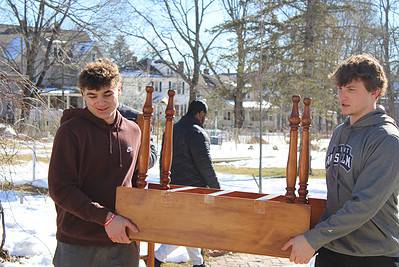
Kateryna remembers struggling to convince a property manager she now relies on. “It took us a bunch of explanations of what we do, where clients are [in the resettlement process], that they are going to be employed…but once he started working with us, he saw how consistently we reach out, how responsive we are, and how consistently we can fill his vacancies. That’s appealing.”
Volunteers turn a housing unit into a home.
When you’re bringing someone who has lost their home to their first new living space in an unfamiliar country, you want it to feel as welcoming as possible. Once IINE has secured an apartment, community volunteers spring into action, helping to deliver and set up furniture, plates, silverware and cookware, cleaning supplies, bedding, and even art for the walls, all donated by community members.
Mike Mailloux, Volunteer Coordinator at IINE’s Manchester office, explains, “We will make the apartment look homey and welcoming, put toys on the beds for the kids and provide everything a family may need for the first few months.”
“Today I actually happened to be there when a family from the Democratic Republic of the Congo—a mom and three kids—showed up. I opened the doors for them, and all the kids were super excited, running around the apartment and playing. They immediately busted open a box of toys in the living room. They were so happy that they had some stuffed animals. It was so fun and so nice to see that.”
When IINE’s community volunteers secure housing for refugees, the keys are resourcefulness and persistence.
The Westside Welcoming Committee Resettle Together team has successfully sponsored two families of refugees, including finding them housing. Group leader Jon Levine’s description of his approach mirrors Paris’s: “Call and beg, call and beg, and keep doing that.”
“It’s just a matter of calling a LOT of real estate agents about any unit on any of the listing websites that looks like it could suit a family’s needs,” he says, adding that it helps to find realtors’ direct numbers, to which a member of Westside Welcoming Committee often has access as a fellow realtor. When he gets a ‘no,’ he asks the realtor if they have a contact who might say ‘yes.’ Once he gets his foot in the door, he has to make his pitch.
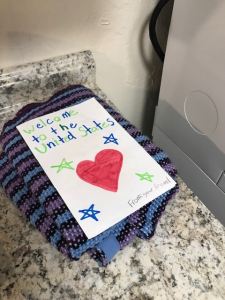
“There’s no greater challenge than getting the agent to believe you can produce a legitimate ’safe’ prospect for their landlord—safe meaning that they’ll pay the rent regularly and not cause trouble! Your own presence and demeanor in representing IINE and its clients can go a long way to doing that. It helps to have your finger on the numbers—to know exactly what you can (and can’t) assure the landlord in terms of rent funds. And if your community group is committed to seeing this family through, then making that clear to the agent and landlord as well.”
Jon likes to say:
“IINE has been settling families like this for more than 100 years, finding them housing, providing English language lessons, full medical coverage, and then working with them to find jobs so that usually within six months or so, they become self-supporting. And our support group of local Boston citizens is committed to doing everything in our power to get them on their feet as quickly as possible.”
He’s gotten good at evaluating an apartment once he gets an offer. “There’s an invaluable website called walkscore.com. Just plug in the address you’re considering, and it will give you both a walkability and a transport score, with bus, T, and train routes near the location, as well as maps that show shopping in the vicinity.”
The Westside Welcoming Committee successfully found housing for a family of four from Iraq in the Boston suburb of Newton and a family of three from Cameroon in the Boston neighborhood of Dorchester.
“The first family is still in their Newton apartment one year later, and the kids love the school they’re in. I think the family in Dorchester was thrilled to have a place to call their own—they’re very happy with the space!”
IINE is looking for long-term (12 months or more) housing in Massachusetts and New Hampshire for newly arrived refugees and immigrants, including families who are currently in MA’s emergency shelter system. Learn more about housing needs here. If you have housing to offer or know someone who might, please be in touch.




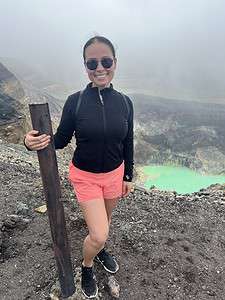


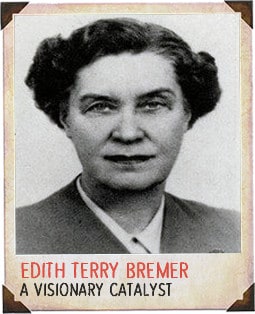 The first International Institute was established by Edith Terry Bremer in New York in 1911 under the sponsorship of the local Young Women’s Christian Association (YWCA), A graduate of the University of Chicago, Bremer had extensive social services experience and had worked as a Special Agent for the United States Immigration Commission. At the YWCA, she administered a survey on the status of immigrant women in the city and learned how great their needs were. In response, she founded the International Institute to provide immigrant girls and women with English language classes and recreational and club activities, and to support them with housing, employment, and citizenship.
The first International Institute was established by Edith Terry Bremer in New York in 1911 under the sponsorship of the local Young Women’s Christian Association (YWCA), A graduate of the University of Chicago, Bremer had extensive social services experience and had worked as a Special Agent for the United States Immigration Commission. At the YWCA, she administered a survey on the status of immigrant women in the city and learned how great their needs were. In response, she founded the International Institute to provide immigrant girls and women with English language classes and recreational and club activities, and to support them with housing, employment, and citizenship. 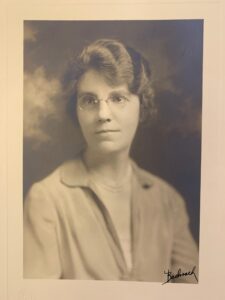
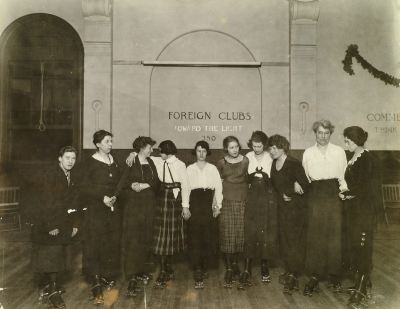

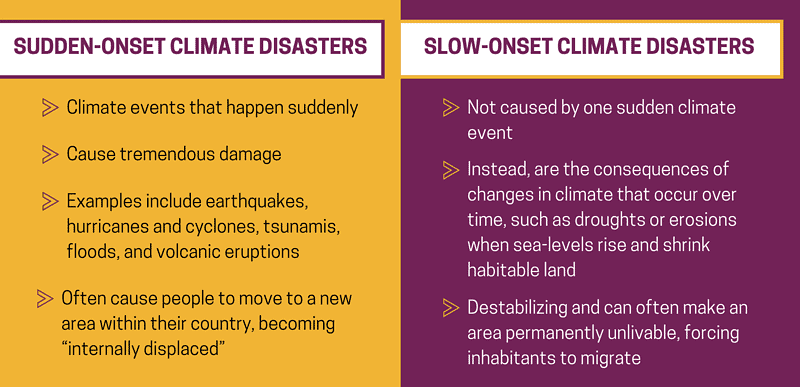


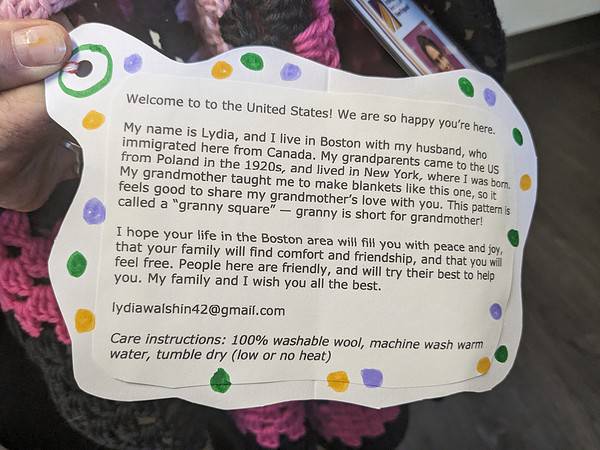

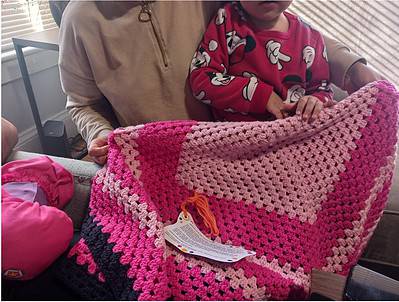


 My name is Anastasiia and I’m from Ukraine. Before the war started I lived happily in my native city – Odesa. Since my teen years, I was really fond of fashion. While graduating from the Odesa National University, I started to build my true bond with fashion, and finally, when I got my master’s degree in economics I realized that my true passion is fashion and that I want to make it my job.
My name is Anastasiia and I’m from Ukraine. Before the war started I lived happily in my native city – Odesa. Since my teen years, I was really fond of fashion. While graduating from the Odesa National University, I started to build my true bond with fashion, and finally, when I got my master’s degree in economics I realized that my true passion is fashion and that I want to make it my job. 





